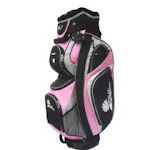The Oldsmobile Cutlass was a great car, but you've probably traded it in by now. You've also chucked the cassette tapes. Why? Because better-performing options came along, making them obsolete. It's time to apply that thinking to your irons.
The main reason golfers hold on to irons past their prime is that the technology is often hidden in a plain shape and presented in a quiet way. Such visual understatement leads consumers to believe irons are short on science and engineering, making their clubs as good as new ones. That is shortchanging the upgraded benefits of today's models.
The creative use of technology and materials has never been more prevalent in irons. Some of it you see (better-designed soles to improve turf interaction) and some you don't (optimal center-of-gravity positions).
Additionally, driver technologies, such as trampoline faces and high moment of inertia, have trickled down to irons. That wasn't the case five years ago.
You might consider your old irons to be trusted allies, but new ones will give you a better chance to get reacquainted with someone you might not have seen in a while: Mr. Green In Regulation.
Read More http://www.golfdigest.com/golf-equipment/2010-05/obsolete-list-irons#ixzz0mW95mT4m
Showing posts with label golf wedges. Show all posts
Showing posts with label golf wedges. Show all posts
Thursday, April 29, 2010
Hybrids: Make the big Leap!
The evolution of the hybrid is similar to that of snowboards: an offbeat, intriguing, even necessary idea with early shortcomings that eventually changed the sport. In 2004, the Darrell Survey Company polled golfers and found that fewer than 1 in 12 carried a hybrid club; but today 1 in 2 golfers carry a hybrid.
Although the first hybrids were admirable as a solution to hard-to-hit long irons, the latest versions have made fundamental advancements in playability. Designers are now able to create a large face and still save weight (about double that of five years ago), which can help position the center of gravity lower and deeper to optimize ball flight. Freeing weight leads to design ideas that couldn't be implemented previously. For example, the soles on early hybrids often were flat and ineffective, but today's leading edges and sole-bounce angles allow the clubs to move through the turf more easily. Another advancement is the ability to individually adjust head shape and size as lofts change. That makes high-lofted hybrids easier to maneuver and low-lofted ones more forgiving.
These improvements have made the hybrid golf's must-have club.
HOW MUCH LIFE IS LEFT?
There are grades of obsolescence. Our four judges, after consulting with members of our academic and retail panel to help determine what keeps a club relevant, assigned a level of "life remaining" to each club. None of the battery icons is completely full. Only current products might achieve that. Three-quarters full, and you're still OK. Half full means it's time to at least start looking. One-quarter full, and you'd better be buying. The red light on? Don't play with these again. Ever.
By Mike Stachura, Golf Digest April, 2010
Read More http://www.golfdigest.com/golf-equipment/2010-05/obsolete-list-hybrids#ixzz0mW5tE000
Although the first hybrids were admirable as a solution to hard-to-hit long irons, the latest versions have made fundamental advancements in playability. Designers are now able to create a large face and still save weight (about double that of five years ago), which can help position the center of gravity lower and deeper to optimize ball flight. Freeing weight leads to design ideas that couldn't be implemented previously. For example, the soles on early hybrids often were flat and ineffective, but today's leading edges and sole-bounce angles allow the clubs to move through the turf more easily. Another advancement is the ability to individually adjust head shape and size as lofts change. That makes high-lofted hybrids easier to maneuver and low-lofted ones more forgiving.
These improvements have made the hybrid golf's must-have club.
HOW MUCH LIFE IS LEFT?
There are grades of obsolescence. Our four judges, after consulting with members of our academic and retail panel to help determine what keeps a club relevant, assigned a level of "life remaining" to each club. None of the battery icons is completely full. Only current products might achieve that. Three-quarters full, and you're still OK. Half full means it's time to at least start looking. One-quarter full, and you'd better be buying. The red light on? Don't play with these again. Ever.
By Mike Stachura, Golf Digest April, 2010
Read More http://www.golfdigest.com/golf-equipment/2010-05/obsolete-list-hybrids#ixzz0mW5tE000
Subscribe to:
Posts (Atom)







